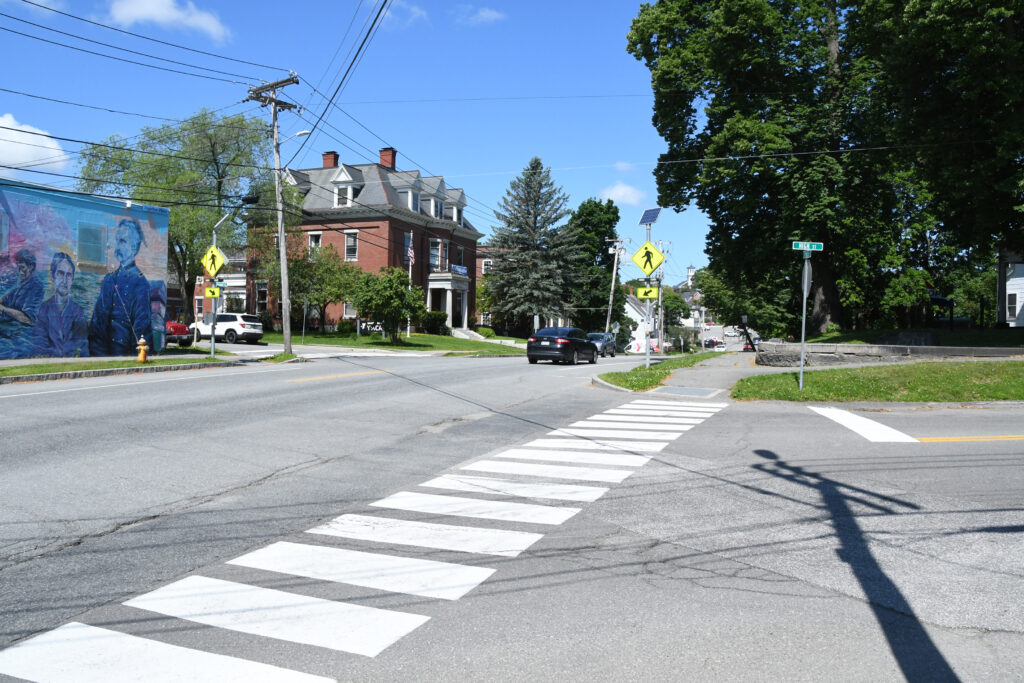Maine Traffic Movement Process

by Diane Morabito, PE, PTOE
Among the myriad of tasks developers face with new projects, the traffic movement permit process is an important one to remember to start early and enlist expert help. Any development project that generates 100 or more one-way trips in any hour of the week requires a traffic movement permit (TMP) from MaineDOT to ensure the surrounding roads and area can safely accommodate the increase in traffic. Such projects typically include drive-through coffee shops, fast-food restaurants, large residential developments, convenience stores, and even churches given their Sunday peak hours. The permitting process identifies any off-site changes that are needed—like adding a left-turn lane or sidewalk—for which the developer is financially responsible. Due to the specialized planning involved, the state requires the permit application to be prepared by a professional engineer with traffic experience. The process can take a few months or up to a year, so it is advisable to plan ahead. Including a Traffic Engineer from the beginning can help to foresee potential mitigations and their impact on project cost.
The TMP process consists of two phases, and while it is the same for each TMP level (100-200 Peak Hour Trips or 200+ Peak Hour Trips), the level of involvement is generally greater for 200+ trip projects. The first step is for a qualified engineer to assemble and submit an application package to MaineDOT and the municipality for the project. The package information includes:
-
- Existing transportation infrastructure
- Previous uses on-site
- Trip generation and assignments for the proposed development
- Accident data for the study area
- Title, right or interest
- Engineered site plan
- Stamped survey plan
- Notice to direct abutters and the public of the filing
Once MaineDOT has reviewed the application package and deemed it complete, the Scoping Meeting is scheduled with the applicant’s team, MaineDOT, and representatives of the municipality. The purpose of this meeting is to discuss area concerns and determine the scope and extent of the required traffic study. The Scoping Meeting and following traffic impact analyses are utilized to determine the offsite concerns—both traffic constraints and safety issues—as well as lack of infrastructure, such as sidewalks and crosswalks. The developer will have to correct the deficiencies or, at a minimum, mitigate their impact as required by the TMP. Developers will often have to expand existing multimodal facilities by extending sidewalks, adding crosswalks with increased visibility features, or providing transit amenities such as bus shelters. Another common mitigation requirement is the addition of a left-turn lane on the adjacent street to safely store traffic turning to enter the development, which is almost always warranted on higher volume roads. Since the developer will be financially responsible for implementing the mitigation, it is important that they have a clear understanding of the likely measures early on.
The TMP process will generally flow much faster, with fewer bumps in the road, by including an experienced Traffic Engineer early in the project planning. They are able to foresee required mitigation and guide developers efficiently through the project by knowing the road design requirements and standards, which vary by roadway classification. There are multiple MaineDOT requirements that control the number and location of curb cuts and potential access restrictions, such as right-turn only drives, which impact site planning.
If there are multiple location options for development, an engineer can help determine the best fit through a comprehensive review of potential mitigations, high crash locations, and existing infrastructure. A large amount of required off-site traffic mitigation can easily deem a project financially unfeasible. Knowing the likely mitigations up front can help developers proceed with reasonable expectations of costs. This is not to say that an occasional surprise does not crop up in the permitting process, but the risk for unknowns is minimized with expert involvement. In the development process, time is money, and traffic engineering experience is invaluable to completing the TMP process in a timely manner.